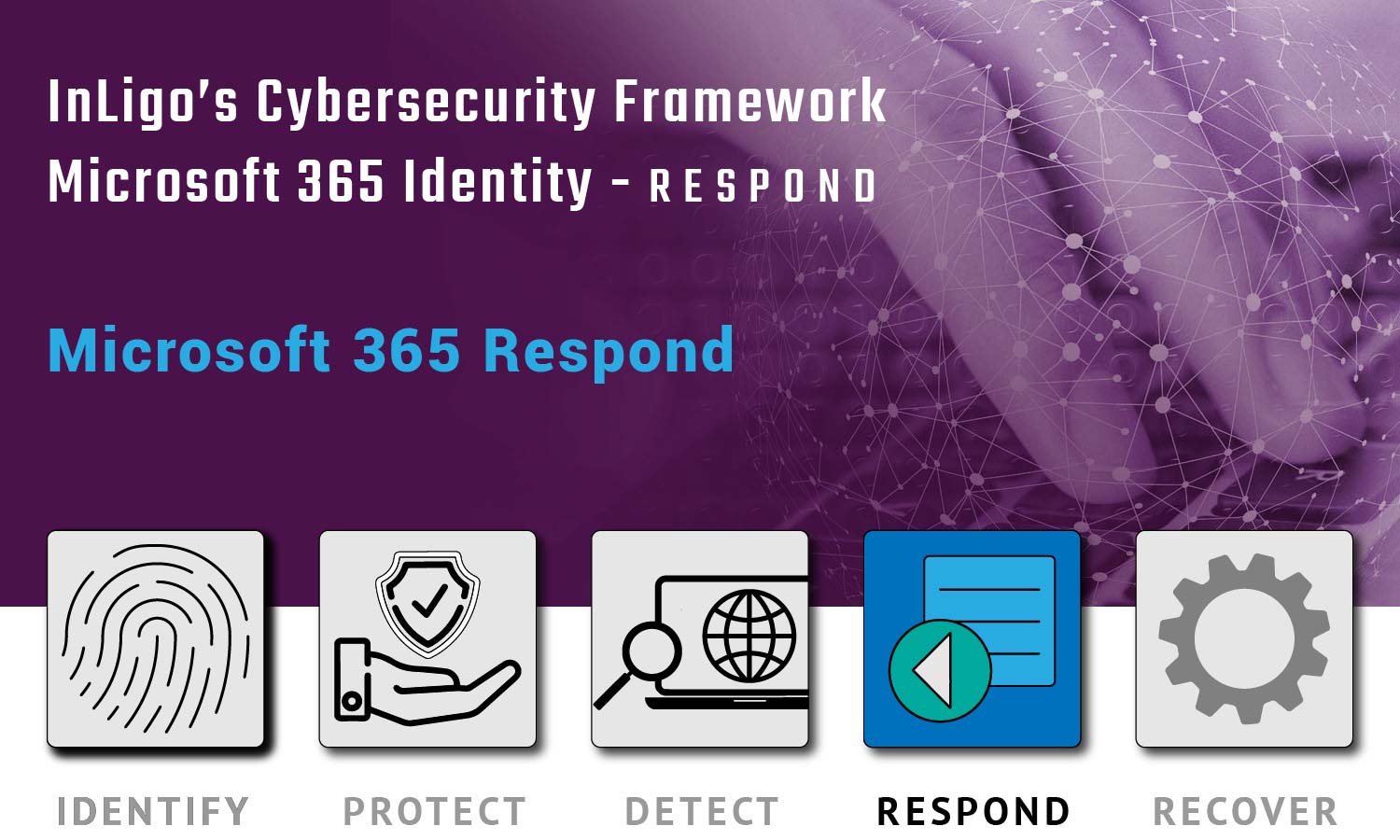
Microsoft 365 Respond: InLigo Security Guidelines and Solutions to Enhance Your Cybersecurity Posture with Microsoft 365 Security Center Feature.
Microsoft 365 Respond is a feature within Microsoft 365 Security Center that helps organizations to respond to and manage security incidents. It includes tools and resources for:
- Detecting security threats: Microsoft 365 Respond uses real-time monitoring and threat intelligence to identify potential security threats.
- Responding to security threats: Once a security threat has been identified, Microsoft 365 Respond provides guidance on how to respond and remediate the threat. This may include blocking malicious traffic, quarantining infected files, or issuing alerts to users and administrators.
- Conducting post-incident analysis: After a security incident has been addressed, Microsoft 365 Respond conducts a post-incident analysis to identify any weaknesses in the organization’s security posture and make recommendations for improvement.
InLigo is a cybersecurity consulting firm that offers managed services to help organizations improve their cybersecurity posture. Some of the services that InLigo offers include:
- Vulnerability assessments: InLigo can conduct assessments of an organization’s systems and applications to identify vulnerabilities and provide recommendations for addressing them.
- Incident response planning: InLigo can help organizations to develop incident response plans to ensure that they are prepared to respond to and manage security incidents.
By leveraging these tools and resources, your business can take proactive steps to reduce the risk of a security incident and ensure that their data is secure.
WHAT IS YOUR SECURITY SCORE?
Response Planning
Respond planning refers to the processes and procedures that an organization puts in place to respond to a security incident or potential threat. These processes may include:
- Alerts and notifications: Microsoft 365 have built-in alerts and notifications that can be triggered in the event of a security incident or potential threat. These alerts can be sent to administrators and users to help them respond quickly to the incident.
- Remediation: Microsoft 365 has built-in tools and technologies for addressing and resolving security incidents. This may include blocking malicious traffic, quarantining infected files, or issuing alerts to users and administrators.
- Post-incident analysis: After a security incident has been addressed, Microsoft 365 conducts a post-incident analysis to identify any weaknesses in the organization’s security posture and make recommendations for improvement.
- Incident response plan: An organization’s incident response plan is a detailed set of procedures for responding to a security incident. This plan should include steps for identifying the incident, alerting appropriate parties, taking remedial action, and conducting post-incident analysis.
InLigo’s Discovery Questions
- What is the current state of your organization’s cybersecurity posture?
- What are the potential security threats that your organization is facing?
- What are the key assets and data that need to be protected?
- What are the current policies and procedures in place for responding to a security incident?
- Who are the key stakeholders that need to be involved in the incident response process?
- How will you communicate with stakeholders during and after a security incident?
- What resources and tools are available for responding to a security incident?
- How will you conduct post-incident analysis to identify areas for improvement in your organization’s cybersecurity posture?
- How will you test and update your incident response plan on a regular basis?
Microsoft 365 Solution
- Security Center
- Intune
- Conditional Access
- Track Trends
- Refine Policies
Business Case
A conditional access policy is trigged because a user’s device is detected with malware, brining it to an unhealthy state and preventing access to company resources. You can mow effectively communicate this to the end user and work on getting the device back a compliant state. Planning improves because you are not under as many pressures of corporate data being breached.
Action Items
There are several action items that should be included in a Microsoft 365 respond planning process:
- Identify the scope of the incident: This includes determining the extent of the security incident and identifying which systems and data may be affected.
- Assess the impact of the incident: This involves determining the potential impact of the incident on the organization’s operations and business objectives.
- Implement containment measures: This includes taking steps to contain the incident and prevent it from spreading, such as isolating affected systems or disabling access to certain resources.
- Gather and analyze evidence: This involves collecting and analyzing evidence related to the incident, including logs and other relevant data.
- Communicate with stakeholders: This includes updating key stakeholders such as management, employees, and customers on the status of the incident and any steps being taken to address it.
- Implement corrective actions: This includes taking steps to fix the root cause of the incident and prevent similar incidents from occurring in the future.
- Review and update the respond plan: This involves reviewing the respond plan and updating it as needed based on lessons learned from the incident.
Overall, the goal of the Microsoft 365 respond planning process is to address security incidents and minimize their impact on the organization quickly and effectively.

